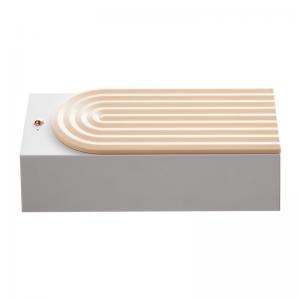
Add to Cart
Ultrasonic Jewelry Cleaner Portable Ultrasonic Cleaner for Cleaning Eyeglass Jewelry toothbrush head
How does ultrasonic cleaning work:
Ultrasonic cleaning is suitable for cleaning a wide variety of materials, including metals, glass, rubber, ceramics and some hard plastics. Ultrasonic cleaning is especially useful for removing tightly-adhered contaminants from intricate items with blind holes, cracks and recesses. Examples of contaminants removed through ultrasonic cleaning include dust, dirt, oil, grease, pigments, flux agents, fingerprints and polishing compound.
Features:
♦ Small in size, do not take up too much space
♦ One-button operation, user-friendly
♦ 46kHz ultrasonic frequency to support intensive cleaning work
♦ 5mins auto shut off
♦ Wide application range, deep cleaning
Specifications:
| Model | GT-A3 |
| Tank Material | SUS304 |
| Tank Size | 177*77*43mm |
| Overall Size | 213*89*66mm |
| Ultrasonic Power | 46KHz |
| Capacity | 420ml |
| Time Setting | 5mins auto shut-off |
| Ultrasonic Power | 10W |
| Rated input power | DC 12V |
The Frequency of Ultrasonic Cleaning:
Ultrasonics is all about the frequency of sound. The ultrasonic frequency is measured in thousands of cycles per second. Generally, ultrasonic sounds range from 20kHz to 100 kHz. Most ultrasonic cleaning occurs around 40 to 60 kHz.
The level of frequency determines the kind of cleaning that is created. At high frequency, small bubbles are produced, which offers a gentler and more detailed cleaning action. If you are looking to clean extensive dirt and contaminants, you should use lower frequencies. The lower the frequency, the bigger the bubbles, allowing the user to perform more intense and aggressive cleaning actions.
Product details:



